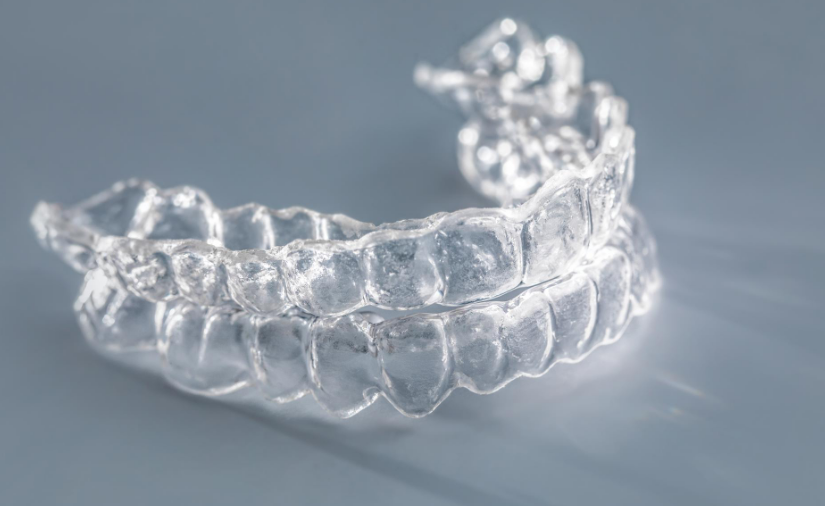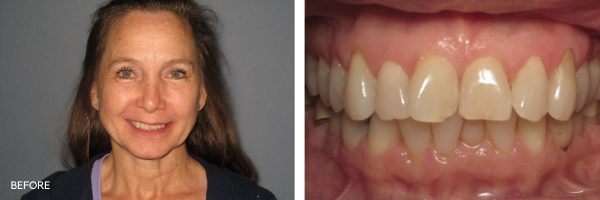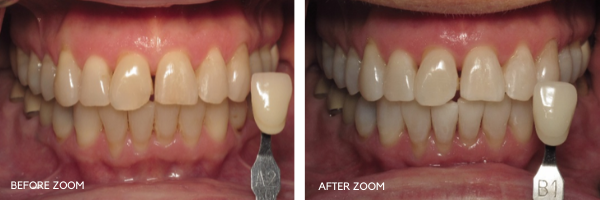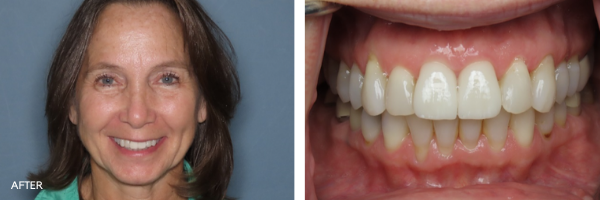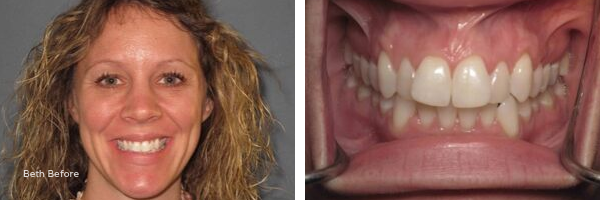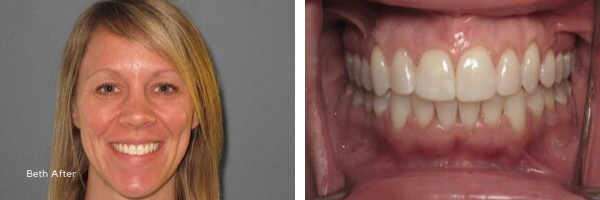By: Dr. Elizabeth Eggert
No one’s smile is perfect, and you should love your smile no matter what! But sometimes having crooked, crowded, or gapped teeth can negatively impact your self esteem. Additionally, this kind of malocclusion can make it harder to floss, chew, and even speak.
If you or someone in your family wants to straighten their teeth, whether for medical or cosmetic reasons, there are mainly two orthodontic treatments they can choose from: the traditional solution of braces, or the newer method of invisible aligners, commonly called Invisalign.
But which is best? At Eggert Family Dentistry in North Oaks, both Dr. Jeff Eggert and Dr. Elizabeth Eggert have years of experience helping patients obtain the smiles they’ve always dreamed about. Dr. Elizabeth is well-trained in the Invisalign system and is even able to help patients at Eggert Family Dentistry undergo this type of orthodontic tooth movement right in our own office! Still, it makes sense to learn about the pros and cons of both types of treatment to determine which one is right for you.
Braces
What are Braces?
Traditional braces are orthodontic appliances made with metal brackets. These brackets are attached to the teeth using a non-toxic dental cement and held together by a metal wire and rubber bands that wrap around the brackets.
For hundreds of years metal braces have been used to safely and effectively straighten teeth into their correct positions, and modern day braces are extremely comfortable, reliable, safe, and effective!
Nowadays, there are multiple kinds of braces to choose from. Patients can now opt for ceramic brackets, which are less noticeable than metal, or lingual braces, which are bonded to the backs of your teeth (on the tongue side).
How Do Braces Work?
Braces use mild, constant pressure to shift your teeth into their proper positions over time. The treatment can last anywhere from 12 months to three years, depending on the severity of your misalignment. Though, the average treatment time for adults is two years.
We rely on one of our amazing local orthodontists to complete traditional braces for our patients. Typically, you would have an adjustment appointment every four to six weeks.
Pros of Braces:
- They’re the most powerful solution: It doesn’t matter how badly your teeth are crowded, braces will effectively anchor onto the teeth and pull them into the desired position. They are able to generate more force than Invisalign, making them an effective treatment for even the most severe cases of misalignment.
- Multiple types of braces to choose from: As we mentioned earlier, you can choose from either the traditional metal braces, ceramic braces, or lingual braces.
- Faster treatment time: When it comes to closing gaps and straightening teeth, braces tend to be the faster solution. This is because the braces put more pressure on the teeth causing them to move more quickly.
- They stay on your teeth: This can be seen as a pro or a con, but for those who are prone to losing items or maybe not the most compliant, it’s definitely a pro: braces stay attached to your teeth for the duration of your treatment, so there’s no chance of them being lost or the treatment not progressing!
Cons of Braces:
- Aesthetics: Traditional braces are more noticeable when you smile or speak. While some people don’t mind the look of braces, many people wish they weren’t so visible.
- Cleaning your teeth can be difficult: Patients need to take great care to make sure they’re brushing and flossing well while they’re wearing braces. With the metal wires, flossing can be particularly challenging.
- Changing your diet: Hard and sticky foods have the potential to break your metal brackets. If this happens, your braces treatment will be ineffective until the bracket has been fixed. So, while you’re wearing braces, you’ll want to avoid foods like hard candy, caramel apples, corn on the cob, etc.
Invisalign
What is Invisalign?
Invisalign clear aligners are a set of plastic trays (aligners) that slowly shift your teeth into the desired position. These clear aligners function much like traditional braces, but they’re much more discreet.
How Does Invisalign Work?
As we’ve said, Invisalign gently and subtly repositions your teeth over time, just like braces do. The entire treatment involves many sets of aligners that are changed out every couple of weeks. Each new set of aligners is designed to move your teeth 0.25 mm until your teeth are completely straight.
Pros of Invisalign:
- The aligners are almost invisible: After all, they’re called Invisalign for a reason! These clear plastic trays are only noticeable if someone observes your teeth closely. With Invisalign, teenagers feel more confident and adults can straighten their teeth incognito.
- Cleaning your teeth is easy: In contrast to traditional braces that are permanently attached to your teeth, Invisalign aligners are easily removed for brushing and flossing!
- No need to change your diet: Because they can be removed, there is no need to alter your diet to accommodate your aligners. But remember, for the best results, Invisalign aligners need to be worn for 22 hours per day, so don’t forget to put them back on when you’re finished eating!
Cons of Invisalign:
- Can be lost: Because Invisalign aligners are removable, that means they can be easily lost if you’re not careful. If you lose your aligners, you’ll need to contact Eggert Family Dentistry to get replacements right away.
- Teeth won’t move: If you aren’t compliant with wearing your aligners, your teeth won’t move. This can be very frustrating for both the patient and the dentist! If you aren’t willing to commit to 22 hours of wear each day, Invisalign isn’t the right treatment for you.
- May not be suitable for severe cases: If the patient is experiencing severe malocclusion, crowding, or jaw issues, Invisalign may not be the most appropriate form of treatment.
Interested in hearing more about Invisalign? At Eggert Family Dentistry we can create a customized Invisalign treatment plan for you and your family. We’d be honored to help you achieve a straighter, healthier smile! Call us today at (651)482-8412!
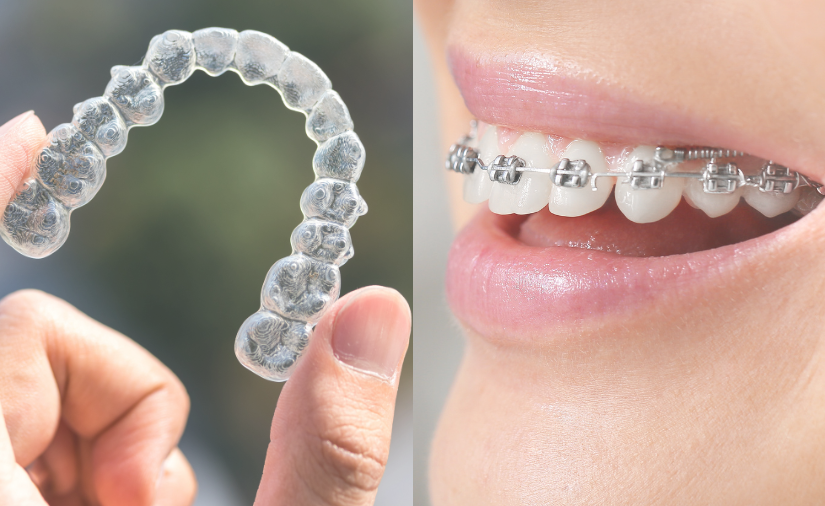
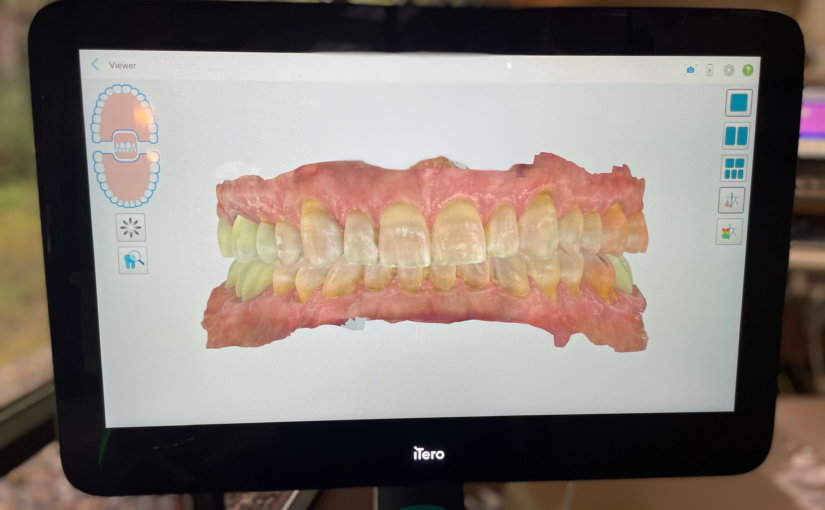
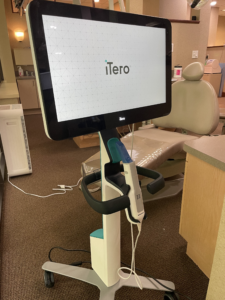 Traditional dental impressions were once synonymous with discomfort, gooey molds, and anxious waiting. Fortunately, times are changing. Dental scanning units, like the iTero, are starting to change the way we are able to approach dental care. Dr. Elizabeth and Dr. Jeff are now able to use these state-of-the-art scanning units to complete your care, helping to make the patient experience smoother and more precise.
Traditional dental impressions were once synonymous with discomfort, gooey molds, and anxious waiting. Fortunately, times are changing. Dental scanning units, like the iTero, are starting to change the way we are able to approach dental care. Dr. Elizabeth and Dr. Jeff are now able to use these state-of-the-art scanning units to complete your care, helping to make the patient experience smoother and more precise.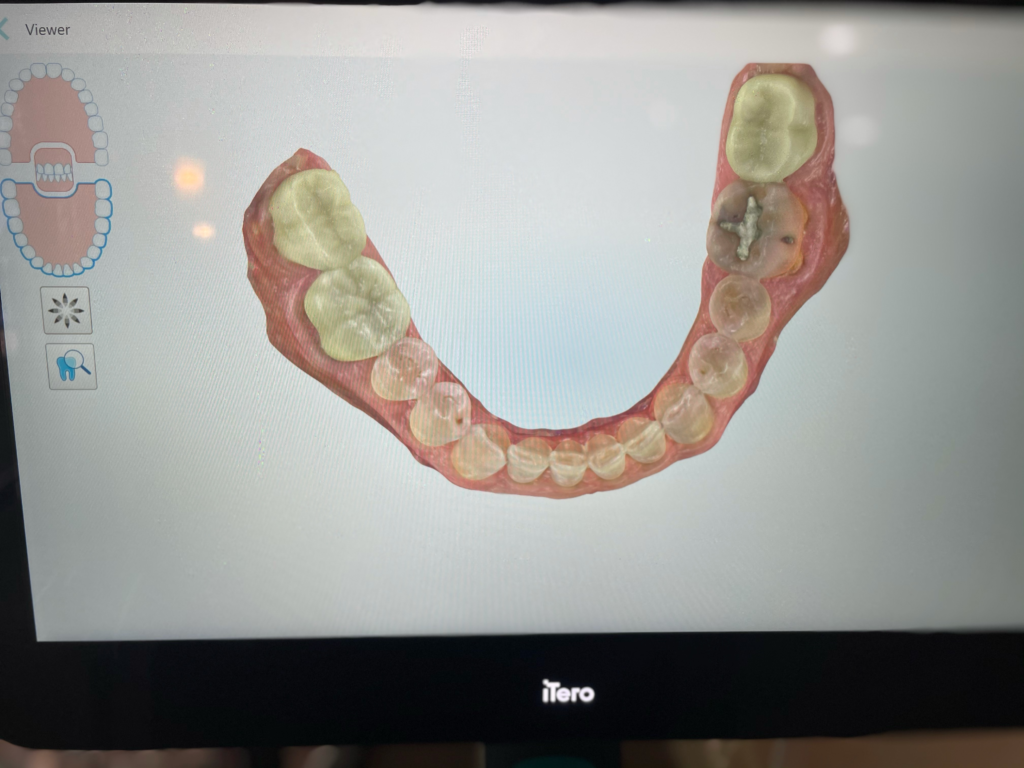
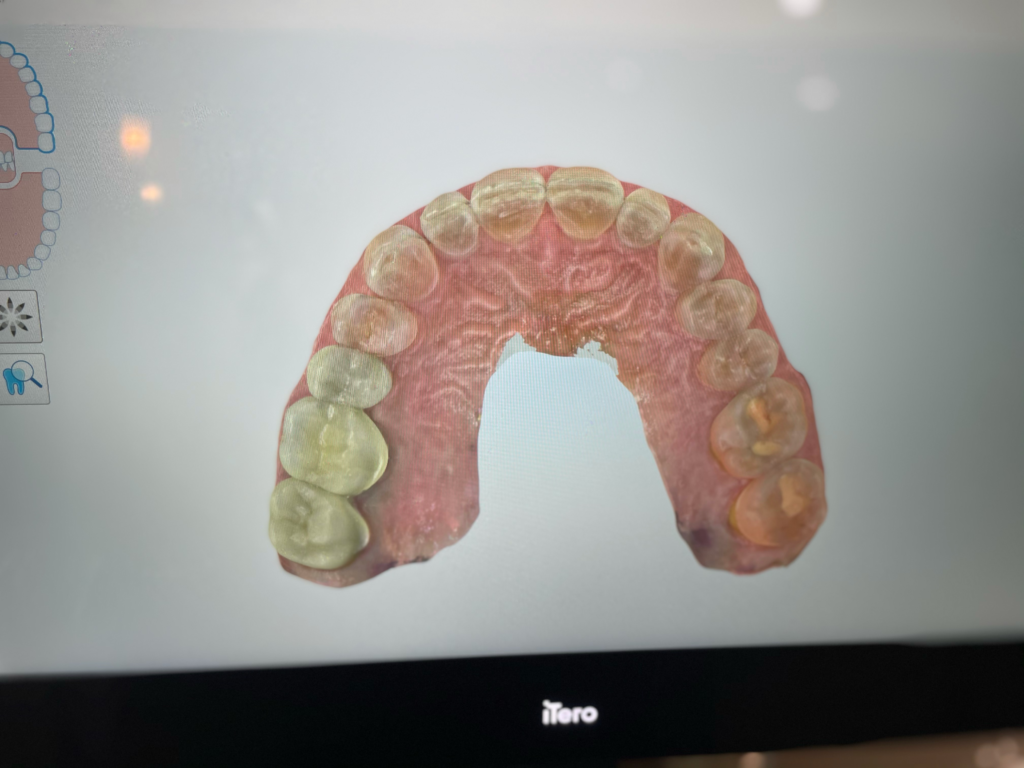

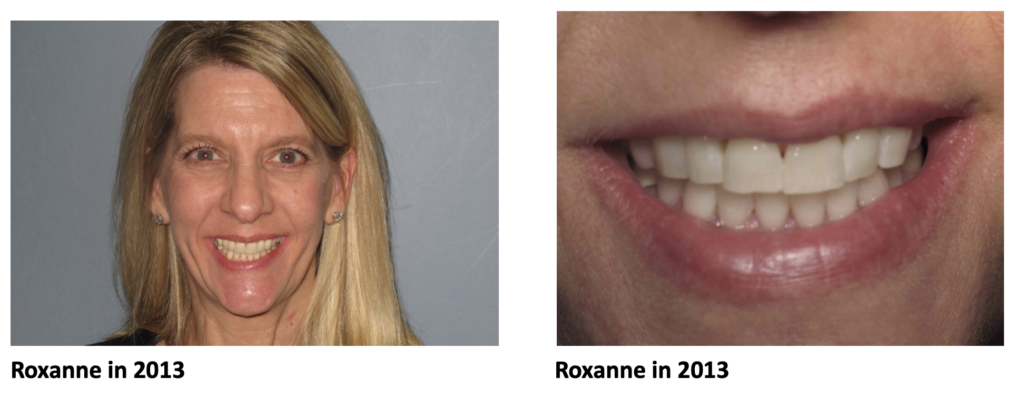
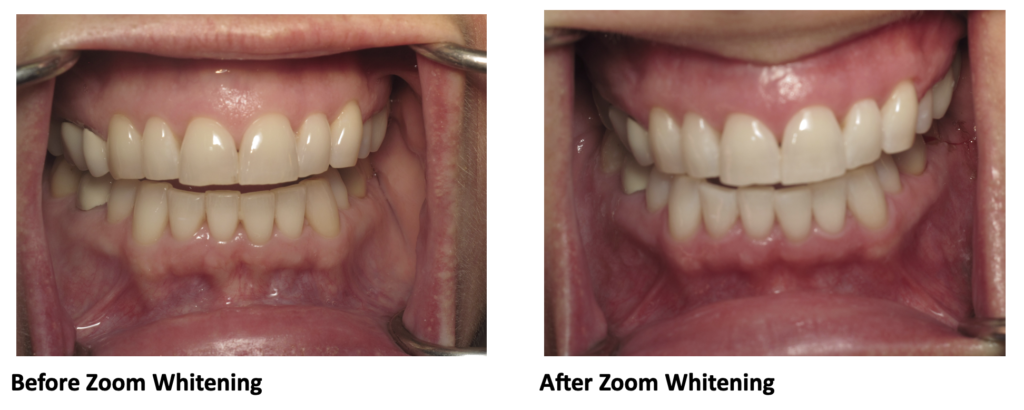
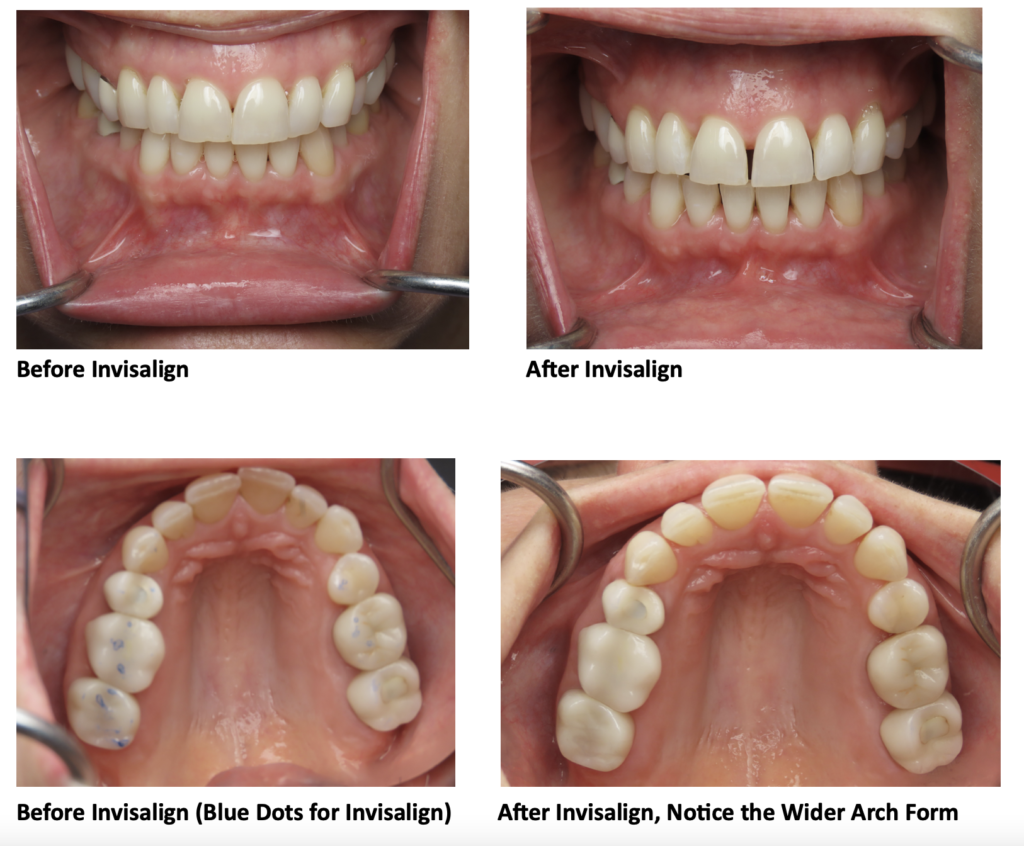
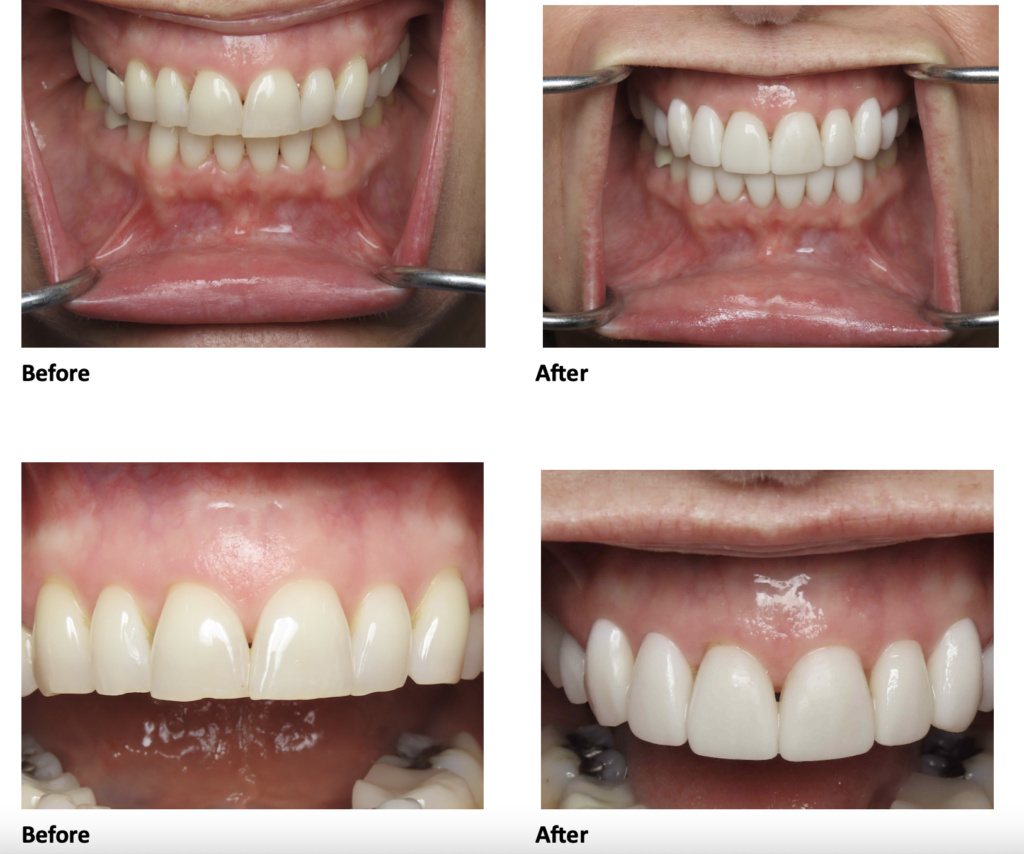

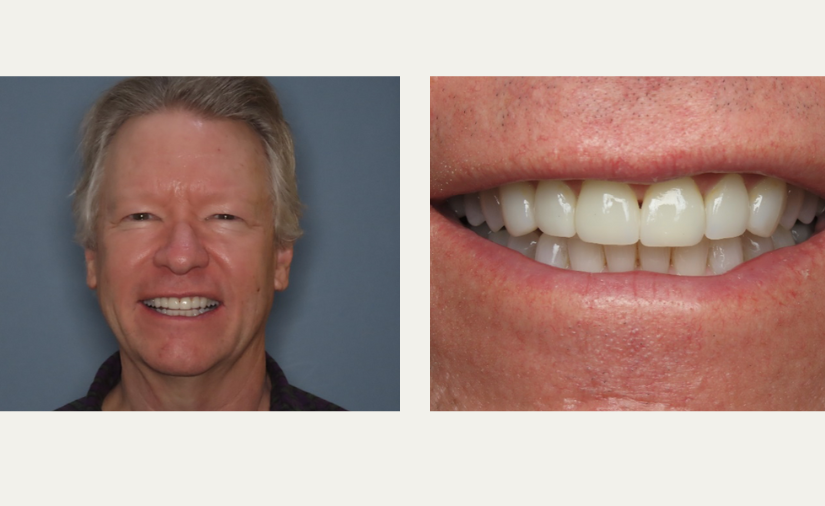
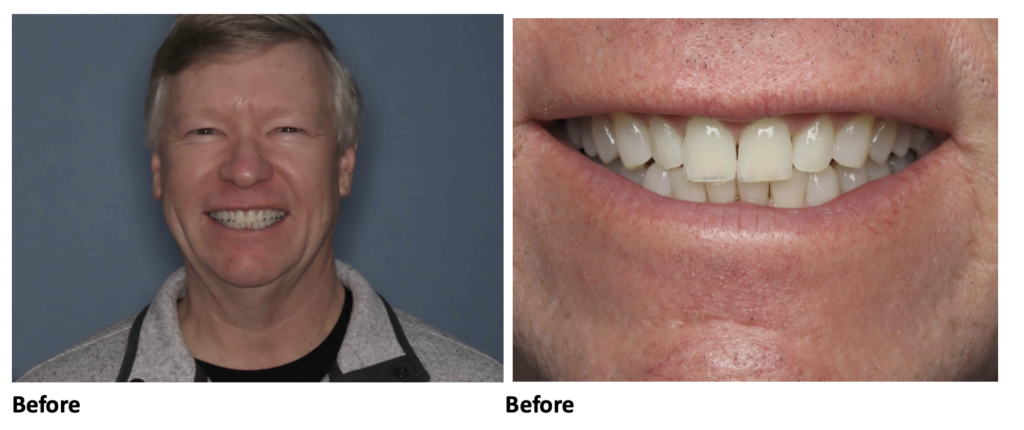
 Pre-Initial Invisalign
Pre-Initial Invisalign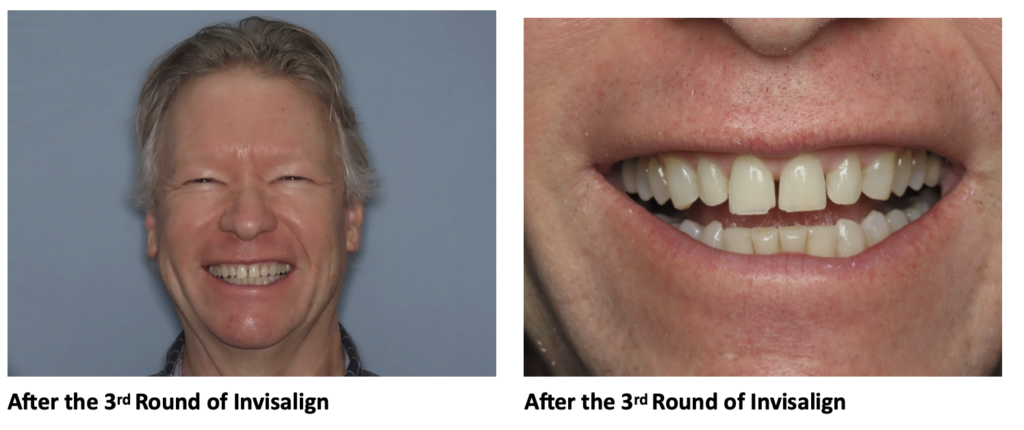
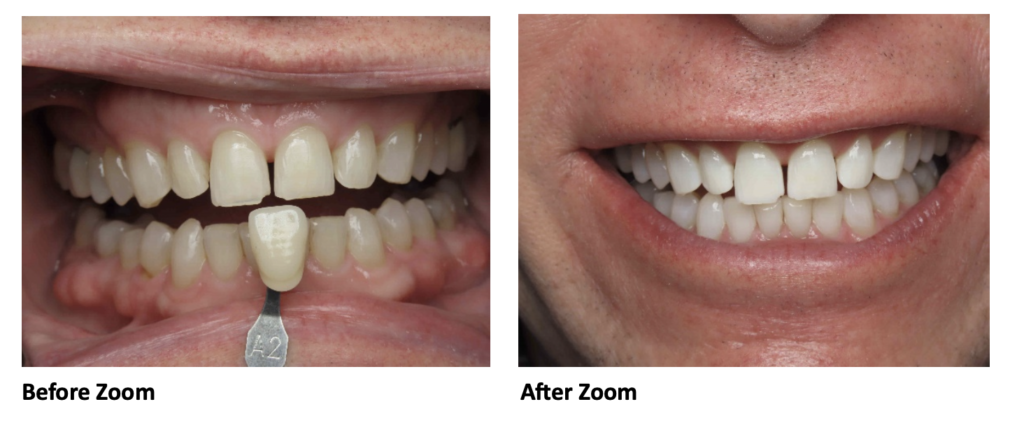
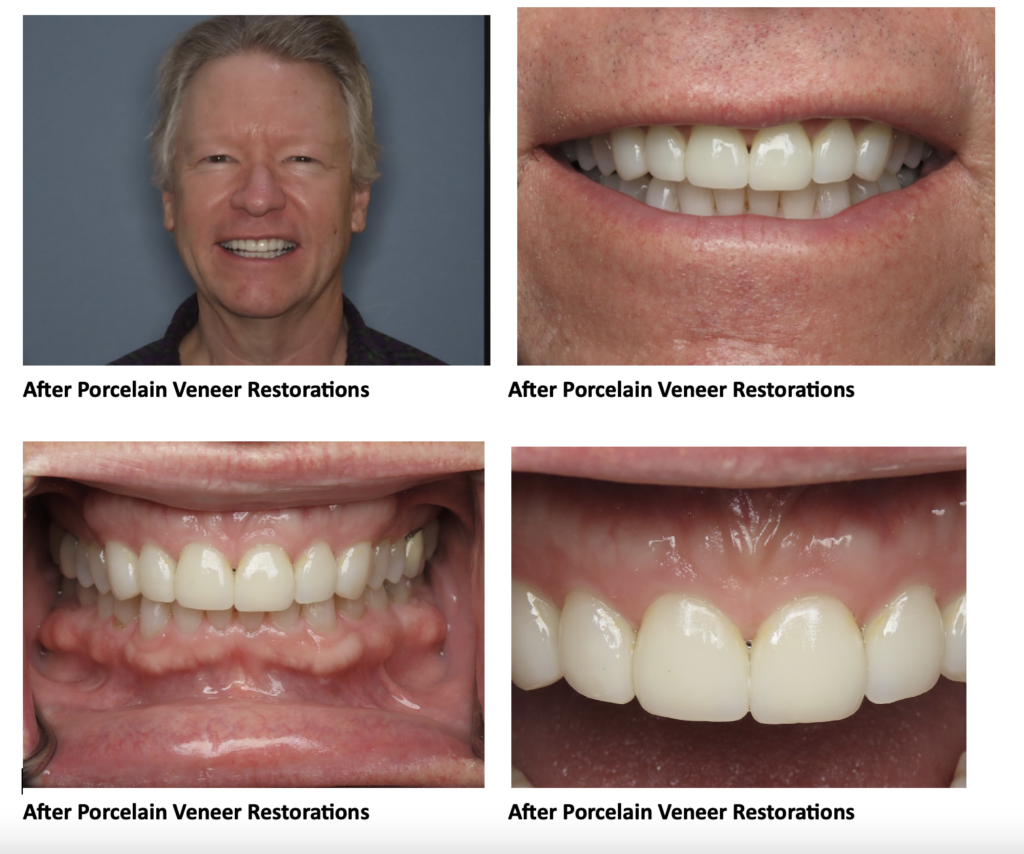
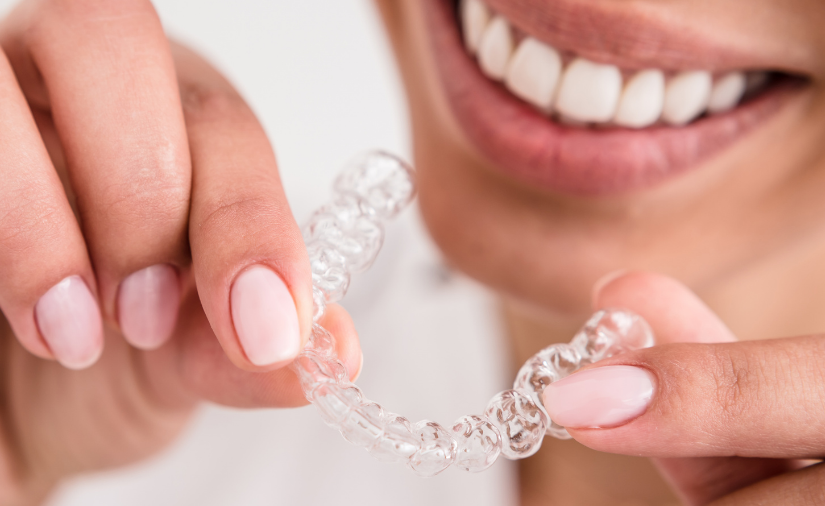


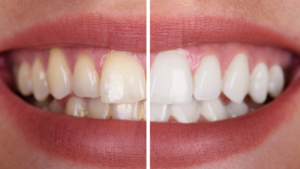 Teeth whitening: Over time, teeth become stained from certain foods, beverages, medications and smoking. Eggert Family Dentistry has many great options to help restore your pearly whites. We provide professional-grade strips and whitening trays that are more effective and gentler on your teeth and gums than their over-the-counter counterparts. Dr. Elizabeth and Dr. Jeff also offer the Zoom and
Teeth whitening: Over time, teeth become stained from certain foods, beverages, medications and smoking. Eggert Family Dentistry has many great options to help restore your pearly whites. We provide professional-grade strips and whitening trays that are more effective and gentler on your teeth and gums than their over-the-counter counterparts. Dr. Elizabeth and Dr. Jeff also offer the Zoom and 
 Tooth replacement: Losing permanent teeth can happen from trauma to the jaw, from gum disease or from tooth decay. Regardless, it can be an awkward situation and one that most people want to remedy as quickly as possible. If you’re dealing with missing permanent teeth, you have some excellent options. These options include dental implants, bridges, partial dentures or full dentures.
Tooth replacement: Losing permanent teeth can happen from trauma to the jaw, from gum disease or from tooth decay. Regardless, it can be an awkward situation and one that most people want to remedy as quickly as possible. If you’re dealing with missing permanent teeth, you have some excellent options. These options include dental implants, bridges, partial dentures or full dentures.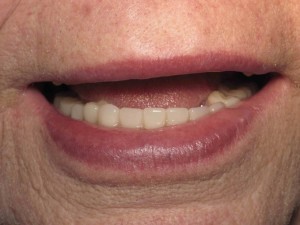 Full Dentures: Full dentures are full sets of upper and/or lower artificial teeth that are suctioned into place and removable for cleaning. While they can take some getting used to, they start to feel more normal over time. Full dentures will eventually become loose as bone mass degrades.
Full Dentures: Full dentures are full sets of upper and/or lower artificial teeth that are suctioned into place and removable for cleaning. While they can take some getting used to, they start to feel more normal over time. Full dentures will eventually become loose as bone mass degrades.